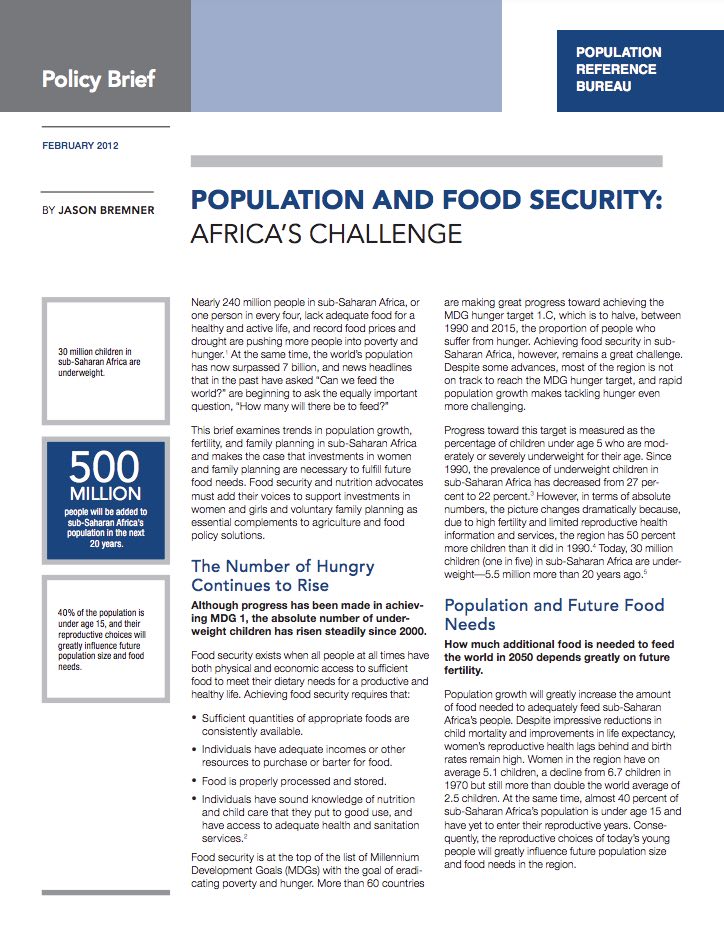Age 100 and Counting
(2003) Reaching age 100 has long fascinated society. The century mark holds an almost mystical importance as a seal of hardiness and good health — the sign of a life well-lived.
(2003) Reaching age 100 has long fascinated society. The century mark holds an almost mystical importance as a seal of hardiness and good health — the sign of a life well-lived.

(2012) Almost two of every three people in sub-Saharan Africa live in a rural area, relying principally on small-scale agriculture for their livelihood. Improving agriculture on small farms is critical to reducing hunger.
(2014) Myanmar (known as Burma until May 1989) is back in the news, especially as it has recently made great strides toward a more democratic regime. The country is expanding its outreach to the international community and seeking more global economic connections.
(2008) Unauthorized migration is a major issue in the United States and many other countries, sometimes generating intense publicity and debate.
Individuals relate to society through their families and households. When these units add or lose members — or when the household members grow older, divorce, or marry — there can be profound social and economic consequences.
(2007) The share of baby-boomer men who divorced by age 40 fell from a high of 29.2 percent of those born from 1945 to 1949 to 25.4 percent of later baby boomers born between 1960 and 1964.
(2008) Despite rapid population growth in parts of the U.S. South and West, 43 percent of all counties lost population since 2000-nearly twice the number of counties that lost population during the 1990s (1,346 counties vs. 689 counties).

(2018) Natural disasters focus the collective imagination on images of community devastation. Beyond the obvious external signs of disaster, such as destroyed homes and ruined infrastructure, are more intimate impacts, such as impeded access to reproductive health services.